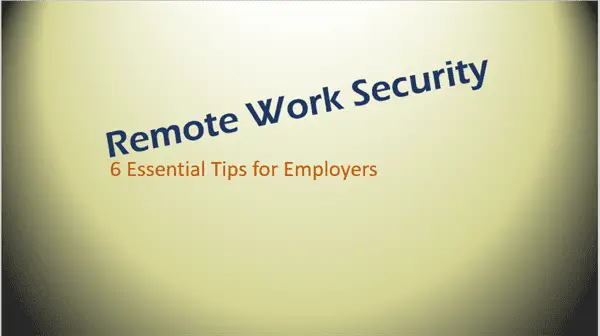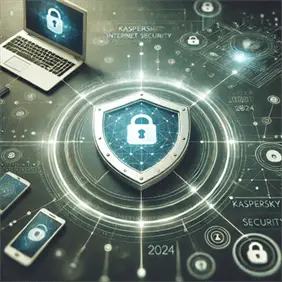Remote Work Security: 6 Essential Tips for Employers
Remote work security. In this digital age, the concept of remote work has become increasingly prevalent. As businesses adapt to this new norm, one aspect that cannot be overlooked is Remote Work Security.
This crucial element plays a significant role in safeguarding sensitive data and maintaining the integrity of business operations. This blog post goes into the world of remote work security, exploring the risks, best practices, and future trends.
It provides a comprehensive guide for internet users, helping them navigate the challenges and enhance their safety while working remotely.
Remote work security blog post summary:
This blog post provides a comprehensive guide on Remote Work Security. It begins by introducing the concept of remote work and the importance of security in this setup.
The post then delves into the key aspects of remote work security, including understanding the risks, implementing best practices, and the role of employers in maintaining security.
The post also explores advanced security measures for remote work and discusses the future of remote work security, including the role of AI and machine learning. The post concludes with a FAQ section addressing common questions related to remote work security.
This guide serves as a valuable resource for internet users, helping them understand and navigate the challenges of remote work security.
Introduction to Remote Work Security
Introduction to Remote Work
In today’s digital age, remote work has become a common practice. It refers to a flexible working arrangement that allows professionals to work outside of a traditional office environment. The concept is based on the idea that work does not need to be done in a specific place to be executed successfully. This trend has been significantly amplified by the COVID-19 pandemic. According to a Gartner HR Survey, the rise of remote work due to COVID-19 has been exponential, with companies across the globe implementing work-from-home policies.
However, with this shift to remote work, the importance of maintaining security in a remote work setup has become paramount. As you navigate the world of remote work, it’s crucial to understand the risks of remote working and how to mitigate them.
The Importance of Remote Work Security
As the number of people working remotely increases, so does the potential for cyber threats. In fact, remote work security risks have become a major concern for businesses worldwide. The risks of working from home for employers include data breaches, phishing attacks, and other forms of cybercrime that can lead to significant financial and reputational damage.
Employees play a critical role in maintaining security when working remotely. They are often the first line of defense against cyber threats. Therefore, fostering working remotely security awareness among employees is essential. This includes educating them on the remote work security policy, promoting remote work security best practices, and providing them with a comprehensive work from home security checklist.
The impact of security breaches on businesses can be devastating. According to recent remote work cybersecurity statistics, the average cost of a data breach is $3.86 million. This underscores the importance of investing in robust remote work security measures.
In the next section, we’ll delve deeper into understanding remote work security risks and how you can effectively manage them. We’ll also explore the role of employers in enhancing remote work security and discuss advanced security measures that can help safeguard your remote workforce.
Key Aspects of Remote Work Security
Understanding Remote Work Security Risks
As you navigate the world of remote work, it’s crucial to understand the security risks that come with it. The risks of remote working are numerous and can include everything from phishing attacks to data breaches. According to Cisco’s Common Security Threats, some of the most common remote work security risks include:
- Unsecured Wi-Fi networks
- Phishing scams
- Malware and ransomware attacks
- Weak passwords
- Lack of encryption
Real-life examples of security breaches in remote work are not hard to find. For instance, in 2020, Twitter experienced a major security breach where attackers gained access to the company’s internal systems by targeting employees who were working remotely. This incident underscores the risks of working from home for employers and the importance of robust remote work security.
Best Practices for Remote Work Security
Maintaining security when employees work remotely can be a daunting task, but there are several best practices you can follow to ensure a secure remote work environment. Here are some key remote work security tips:
- Secure network connections: Always use a secure, private network when working remotely. Public Wi-Fi networks can be easily compromised, making them a risky choice for remote work.
- Use of VPNs: A Virtual Private Network (VPN) can provide an extra layer of security by encrypting your internet connection and hiding your IP address.
- Regular software updates: Keeping your software up-to-date is crucial for security. Software updates often include patches for security vulnerabilities that could be exploited by cybercriminals.
- Strong password policies: Implementing strong password policies is a simple yet effective way to enhance security. This includes using complex passwords and changing them regularly.
- Two-factor authentication: Two-factor authentication (2FA) adds an extra layer of security by requiring two forms of identification before granting access to an account.
- Secure communication channels: Use secure communication channels for all work-related communications. This includes encrypted email services and secure video conferencing tools.
Role of Employers in Remote Work Security
Employers play a crucial role in maintaining remote work security. Here are some ways employers can enhance security when their employees work remotely:
- Providing security training to employees: Regular security training can help employees understand the risks of remote working and how to mitigate them. This includes training on recognizing phishing scams, using secure networks, and following the company’s remote work security policy.
- Implementing a comprehensive remote work security policy: A comprehensive security policy should outline the company’s expectations for remote work, including acceptable use of company resources, data management practices, and incident response procedures.
- Regular security audits: Regular audits can help identify potential security vulnerabilities and ensure that all security measures are working as intended. These audits can be conducted internally or by a third-party security firm.
In the next section, we’ll explore advanced security measures for remote work and discuss the future of remote work security. Stay tuned!
Enhancing Remote Work Security
Advanced Security Measures for Remote Work
As you continue to navigate the world of remote work, it’s important to stay ahead of the curve by implementing advanced security measures. These measures can provide an additional layer of protection against the risks of remote working. Here are some advanced remote work security tips:
- Use of security software: Utilizing security software, such as antivirus and anti-malware programs, can help protect your devices from threats. These programs can detect and remove malicious software before it can cause damage.
- Encrypted data storage and transmission: Encryption is a powerful tool for protecting sensitive data. It works by converting data into a code that can only be accessed with a decryption key. Use encryption for both data storage and transmission to ensure that your data remains secure even if it falls into the wrong hands.
- Regular backup of data: Regularly backing up data can help protect against data loss in the event of a security breach or system failure. Use a secure cloud storage service or an external hard drive for backups, and make sure to encrypt your backup data for added security.
The Future of Remote Work Security
Looking ahead, the future of remote work security is promising. Emerging security technologies are continually being developed to address the evolving remote work security challenges and remote work security concerns.
One such technology is Artificial Intelligence (AI). AI can be used to detect unusual activity or anomalies that may indicate a security threat. Machine learning, a subset of AI, can be used to learn from past incidents and improve security measures over time.
In conclusion, maintaining security in a remote work setup is a multifaceted challenge that requires a comprehensive approach. By understanding the risks, implementing best practices, and staying abreast of emerging technologies, you can create a secure remote work environment that protects your data and your business.
Remote work security FAQs
As we wrap up our discussion on remote work security, let’s address some of the most frequently asked questions on the topic. These questions cover a range of topics, from key security concerns to best practices for secure video conferencing.
-
What are the key security concerns when working remotely?
The key security concerns when working remotely include unsecured Wi-Fi networks, phishing scams, malware and ransomware attacks, weak passwords, and lack of encryption. These concerns highlight the need for robust security measures and policies in a remote work setup.
-
How do you maintain security when employees work remotely?
Maintaining security when employees work remotely involves implementing a comprehensive remote work security policy, providing regular security training to employees, using secure network connections, employing strong password policies, and regularly updating software.
For more detailed information, you can refer to our section on Best Practices for Remote Work Security.
-
What are the examples of security considerations for remote users?
Security considerations for remote users include ensuring a secure internet connection, using VPNs, regularly updating software, using strong and unique passwords, enabling two-factor authentication, and being vigilant against phishing scams and other cyber threats.
-
Which two tools increase security for remote workers?
Two tools that can significantly increase security for remote workers are VPNs and two-factor authentication. VPNs provide a secure internet connection by encrypting your data, while two-factor authentication adds an extra layer of security by requiring two forms of identification before granting access to an account.
-
How can businesses ensure data privacy while working remotely?
Businesses can ensure data privacy while working remotely by implementing strong data management practices, using encryption for data storage and transmission, and providing training to employees on data privacy best practices.
-
What are the best practices for secure video conferencing?
Best practices for secure video conferencing include using secure and trusted platforms, enabling meeting passwords, controlling meeting attendance with a waiting room feature, not sharing meeting links publicly, and ensuring that the video conferencing software is up-to-date.
Conclusion
By understanding and addressing these common questions, you can better navigate the challenges of remote work security and create a safer remote work environment.
Related Posts to Remote work security:
- Cybersecurity and Online Privacy
- Best VPN Service: Stream, Surf, and Stay Secure
- What is a VPN and how does it work – (and why it’s worth it)
More Information:







